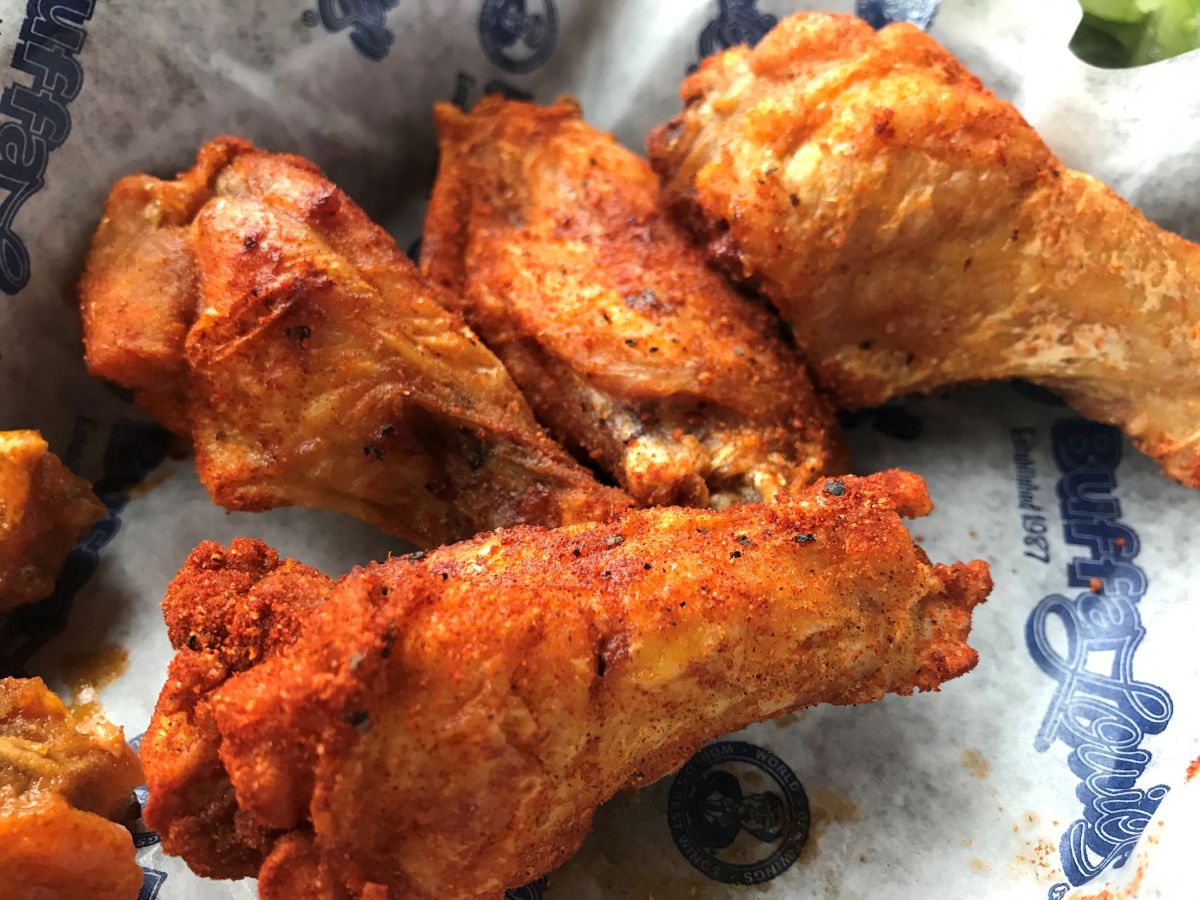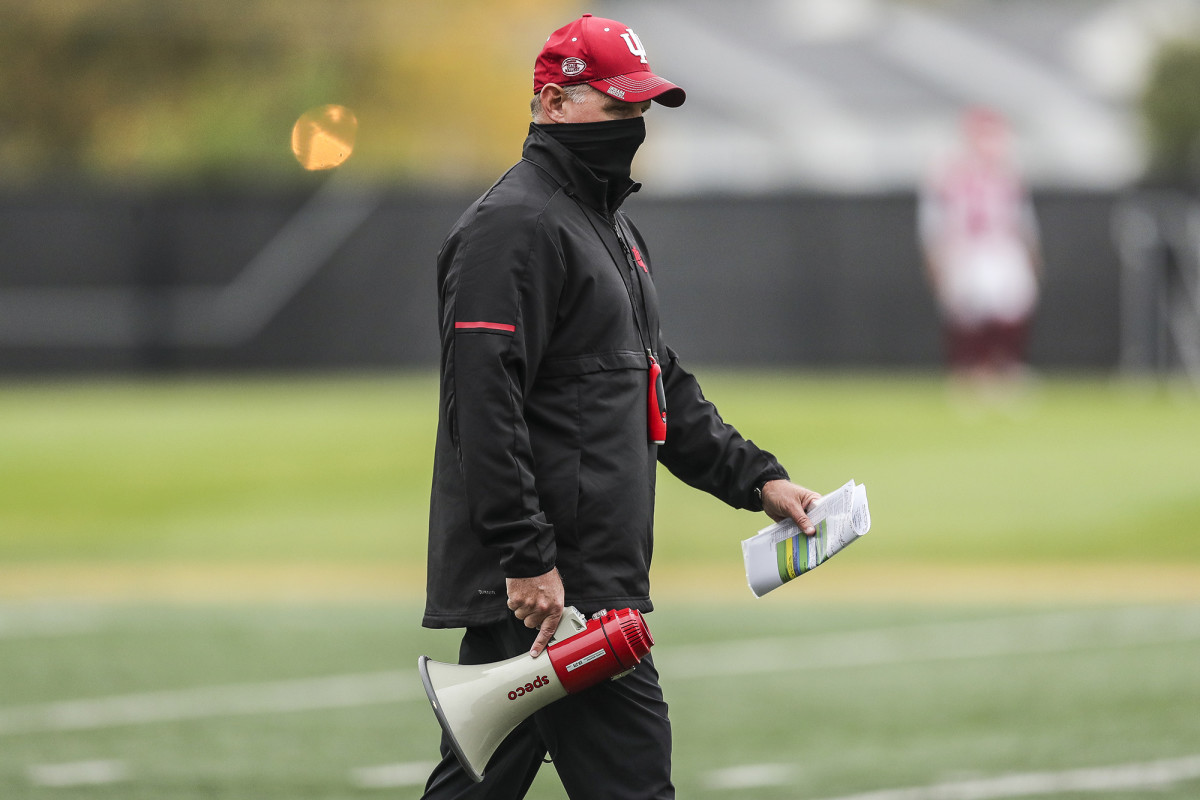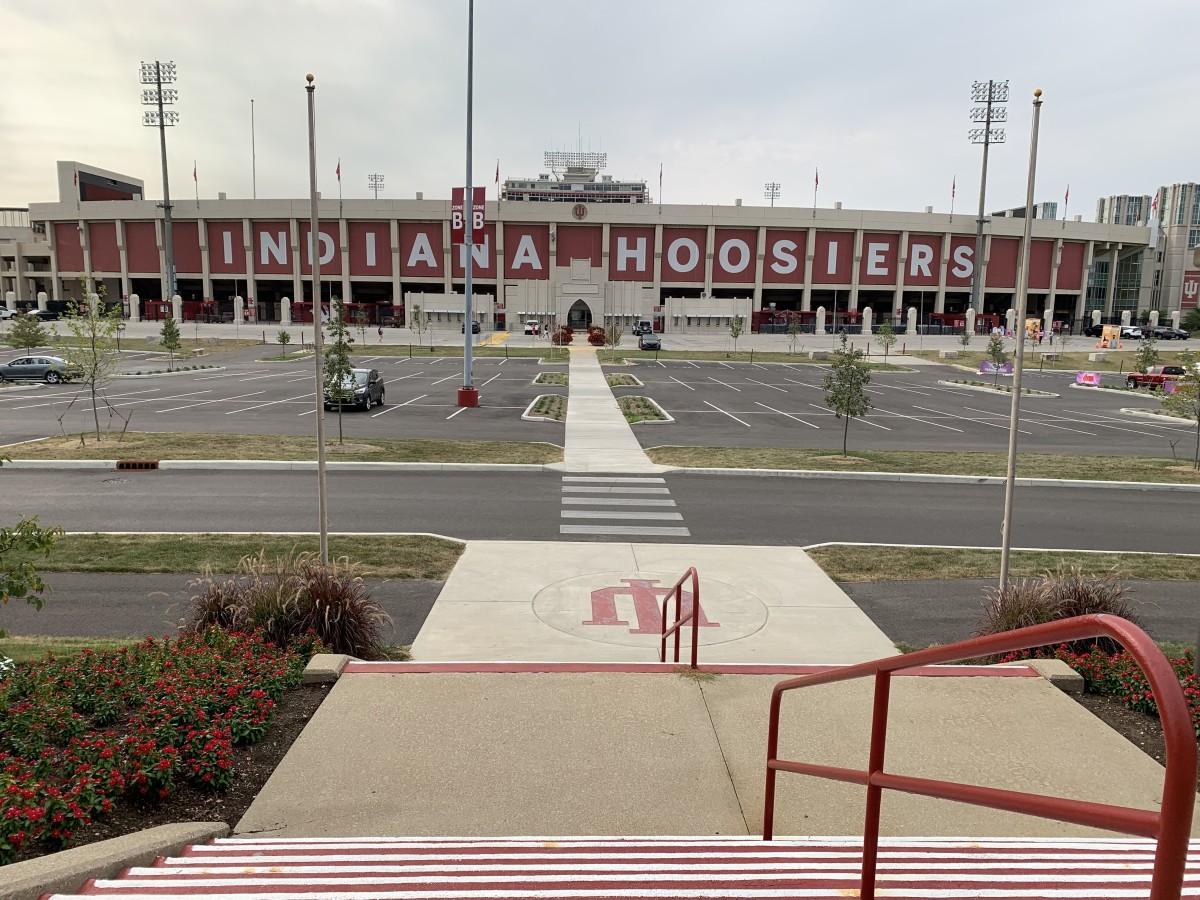The New IU: What Life is Like in Bloomington During COVID-19
BLOOMINGTON, Ind. — The sidewalks between Woodburn Hall and Ballantine Hall were nearly empty. The clock struck 11 a.m., ringing out its familiar 11 tolls, and typically that tintinnabulation is accompanied by hundreds of bustling students hurrying to an 11:15 class somewhere on one of America's most beautiful campuses.
But this semester in Bloomington warrants a whole new feel to life on the Indiana University campus. These days, the clock towers spread throughout the campus ring every 15 minutes without much of an audience.
The students who walk these streets today are masked up, some safely attending classes in spaced-out rooms, holding on to some form of normalcy in this aberrant college lifestyle.
It's all so completely different, nothing like IU students past and present have ever seen.
Dining halls, usually filled with students scrambling for a meal between classes or freshmen chatting away in their first few weeks of college, are now empty, prohibiting any sit-down scenarios with any groups of kids, large or small.
The dorms guidelines are strict. Freshmen are required to wear masks to walk the hallways or use the bathroom. They can get into trouble if anyone besides their roommate enters their 130-square foot space. If a student tests positive for the COVID-19 virus, they have the option to isolate in the Ashton Residence Center or head home for a few weeks of quarantine.
It's never been like this before on Indiana's campus. It's not the same off-campus either, where large gatherings are now non-existent. Fun and frivolity? It needs to be kept to a minimum to prevent massive outbreaks, and that's not an easy point to get across to college kids.
The beloved Kilroys on Kirkwood hasn't been open since March and isn't expecting to do so until it can operate normally without any limitations. Kirkwood Avenue can still draw a crowd on the weekends, but mostly everyone is masked up.
This is how it is in Bloomington now.
And, like it or not, this is the new IU.
'I feel like I can’t learn over a computer'
Indiana’s hybrid setup for this semester has a majority of its students taking their classes online. If classes are in person, they’ll have less than 15 people in it, and most in-person classes are with hands-on material, such as science labs, that can't be done virtually.
Caleb Kavanaugh, a freshman at Indiana who lives in the Briscoe dormitory, has zero classes in-person with his finance major. He’ll wake up in his dorm, and attend classes over Zoom the rest of the day.
He didn't think he'd have so much free time during his first year of college, and he feels like he needs to get outside every day to not feel trapped in his room.
Since he has a car in Bloomington, he’ll usually go to Planet Fitness and work out. Indiana's Student Recreational Sports Center (SRSC) is open, but with a limited capacity.

Kavanaugh has gotten used to the virtual learning, but he admits it’s difficult sometimes taking notes online and not having much interaction with his classmates.
“I feel like I can’t learn over a computer,” Kavanaugh said.
He has taken advantage of some virtual office hours, but he said it just doesn’t feel the same doing everything from his laptop.
Kavanaugh was interested in rushing for a fraternity, and that whole process was online as well. He would have Zoom calls with certain frats he was interested in, and he had to make a decision without ever going to the house in person, much how like high school recruits are navigating college sports right now.
“At least I don’t know what I’m missing, because this is my first semester here,” Kavanaugh said.
'I thought it was going to be more carefree'
With new guidelines set in place for all the dorms on campus, meeting new people has been a challenge for the freshmen trying to branch out of their hometown posse.
For freshman Nadia Paredes, she didn’t plan to originally attend Indiana. She wanted to go to the University of Colorado in Boulder, but when COVID-19 hit, she decided to stay closer to home. Growing up in the northern part of Indiana, she didn’t want to risk going to Boulder, have things get really bad and be so far away from home, so she came to Bloomington instead.
But even her experience in B-Town so far hasn’t been what she imagined.
“It’s been a huge adjustment,” Paredes said. “I thought it was going to be more carefree.”
Paredes and her roommate, who live in Foster Quad, already have gotten in trouble for having two of their friends in their dorm room for 15 minutes.
Unlike Kavanaugh, Paredes has two in-person classes. Students have to have masks on the entire time, the desks are separated six-feet apart, and if they have to work in groups, there are dots on the floor they can wheel up to in order to talk with classmates at a socially-distanced level.

When Paredes prepares to leave her philosophy class, she said all students have to sanitize their desks and stations before they go.
In terms of getting food from the campus’ dining halls, students’ meal plans are connected to Grubhub.
Through Grubhub, they can select which dining hall they want and which restaurant within the dining hall they want to order from. They'll add food to the checkout bag, order it, and there’ll be an estimated time to come pick it up. The food will be lined up in a bag on a table labeled alphabetically, and you can't enter the doors unless you have proof your order is ready.
Eating inside the dining hall is prohibited, so most students will eat on tables outside or just bring the food back to their dorms.
It’s been a big adjustment for everyone who has come back to Bloomington, especially the newcomers. This isn't what they signed up for. They don’t get to experience their first football tailgate or basketball game, but both Kavanaugh and Paredes admit they hope it will only get better in the coming semesters.
“I hope it gets better because, if it doesn’t, I was debating going home sophomore year because what’s the point of paying to be here if you can’t get the full experience?” Paredes said.
'I think it's going O.K., but it's not ideal'
For Jason Peifer, a professor in Indiana's Media School, the switch to online teaching has been an adjustment.
Peifer teaches public opinion and media ethics, and he typically instructs students to put away their laptops at the start of class. But now, with both of his classes solely online, he needs students on their laptops in order to participate.
"You always know that students are half-distracted. If they’re allowed to use computers in the classroom, you know they are chatting or browsing," Peifer said. "Sometimes, you can see them having conversations on Zoom while they’re muted."
He elected to have class online not just because of public health safety, but it was also his personal preference for his family because he has two small children at home.
He knows students can get worn out from being on a computer all day, so he tries to make accommodations for his classes.
“I try to build in some components where they don’t have to meet a certain day or not drag out the whole hour and 15 minutes," Peifer said. "So, I think it’s going O.K., but it’s not ideal."
To the students who say they feel like they aren't getting the full learning experience, Peifer sees how they might feel that way.
"It feels limited," he said. "That’s a tension I always feel. I keep telling myself I can’t cram everything in that I would in a normal class experience."
Students will be going home for Thanksgiving and won't be coming back until early February. That means they will spend the last three weeks of the fall semester online, and will take their finals online as well. They will begin the first three weeks of the spring semester completely online in January after the holiday break.
Peifer isn't sure how things will look when students return in February, but he predicts it will be much of the same with the hybrid format.
"I don't think this is just going to dissolve away by mid-February," Peifer said.
'They shouldn't have opened Greek houses in the first place'
Greek life has been an entirely different story since students came back to campus.
For the week of Sept. 20, the mitigation testing COVID-19 positivity rate was 1.3% across all campuses (compared to 1.9% the week prior), according to the Indiana University COVID-19 Testing Dashboard. The dashboard is updated every Wednesday, so the most recent update came on Sept. 30.


As for Greek life, the positivity rate among the 824 test results from communal living (Greek houses) was 1.8%. It was 3.1% the week prior.
At one point over the past two weeks, more than half of the Greek houses at Indiana were under quarantine. It got the point where the university put out a statement saying they recommended that students living in Greek houses find somewhere else to live. They couldn’t officially enforce that rule, because only the Monroe County Health Department, which regulates all communal housing, could do that.
Tori Mance, a sophomore at Indiana who was living in the Zeta Tau Alpha sorority, said they had the option to stay in the house or move out and get a full refund. Mance decided to leave, and now she’s couch-surfing in Bloomington as she tries to find a new place to live.
Mance said when she got to her sorority on Aug. 21, one girl was already in quarantine. Mance lived in the house for just six days before moving out.
“It was very chaotic because we only had one quarantine room in our house,” Mance said. “The first day I got there, one girl was already quarantined, so it spread pretty quickly throughout the house. They shouldn't have opened Greek houses in the first place.”
As of Monday, Sept. 29, a total of nine houses remain under quarantine.
Last week was the first time the total number of houses quarantined has dropped under 50% in over three weeks.
Downtown dining
Most restaurants and bars down Kirkwood Avenue are open. Even though the state of Indiana has moved to stage five, which is the final stage of the state's reopening plan, Indiana University is still under the same protocols.
"We are still in the midst of a pandemic, and IU's COVID-19 policies remain in place," it says in IU's COVID-19 Dashboard. "The IU community should continue to make good decisions—including wearing face masks, maintaining physical distance of at least 6 feet, and washing hands frequently—to limit the spread of the virus."
BuffaLouies, one of Bloomington's most popular establishments just off campus, has added additional seating outside. If you order food for pickup, you can't enter the building to get it. You send a text saying you have arrived, and the food is brought out to you.
When it comes to dining in on busy nights, you have to be seated by an employee rather than choosing your own table. Only one person from your table can get in line at a time to order food.

It's a much different environment, but it's what's required to keep people safe.
"It's definitely still different to how things were last year," said Jeremy Gunter, a junior from West Virginia who was dining in last Friday. "We like to get wings from here every week, but now it's a little harder. We're not always guaranteed a table, so I guess, sometimes we'll just order online and bring it back."
BuffaLouies has already had to shut down for a few days due to COVID-19, and so has Nick's English Hut. Both are back open now, and most places down Kirkwood are expected to see an influx of customers as football season returns later in October.
"I think it's going to help business for sure," Gunter said. "But, it also means more people, which makes it less safe."
Where Indiana athletics stand
On Sept. 4, Indiana men’s basketball, wrestling, field hockey and men’s soccer had to pause their workouts after 14 combined members within those programs tested positive for COVID-19.
That was the latest collection of positive tests from Indiana athletics, but all programs have resumed workouts now.
The athletic department has administered 1,417 COVID-19 tests for athletes, coaches and staff, as a part of its return to campus protocol, with 63 positive tests reported. Testing began on June 8.
The one bit of good news for Indiana athletics was the Big Ten decided to bring back football, which the conference announced Sept. 16.
The Hoosiers will be playing nine games, opening the season against Penn State on Oct. 24 at Memorial Stadium. No fans will be in attendance except for potentially family members.
The football program has begun daily rapid testing, which the university is funding until Sept. 30 when the Big Ten takes over with footing the bill
"All of our guys will be tested daily with tests provided by the university that we will use until the end of the month," head football coach Tom Allen said in a Zoom call last week. "That was huge.
"That gives us a ton of confidence in the fact that we can begin this preparation process the way it needs to be done and allow us to be able to keep a clean, healthy field of guys that we're going to be around every single day, and that will definitely bode well for our future."

Allen said Monday that they've administered over 1,200 tests since daily testing started and only one has come back positive. It was a part-time staff member, so none of the players or coaches have tested positive.
The men’s and women’s basketball seasons are scheduled to start Nov. 25, while the other fall sports have all been moved to the spring.
It's up to the athletes to be responsible when they aren't practicing or watching film.
"Just the stadium and back home, really,” Indiana cornerback Jaylin Williams said of his daily routine. “Because I got all I need right now. Focus on the season. Just the stadium and back. That’s all I’m worried about.”

